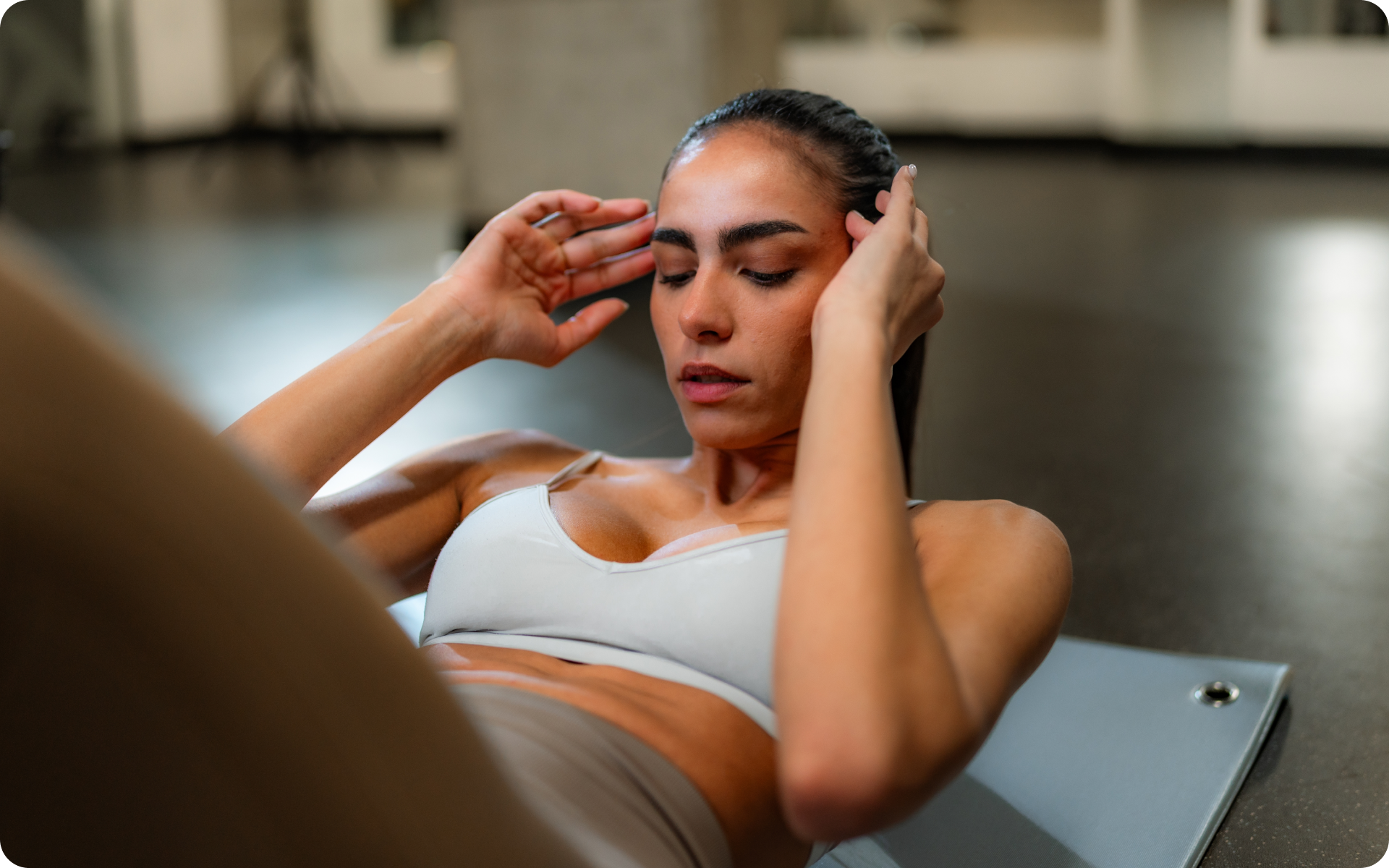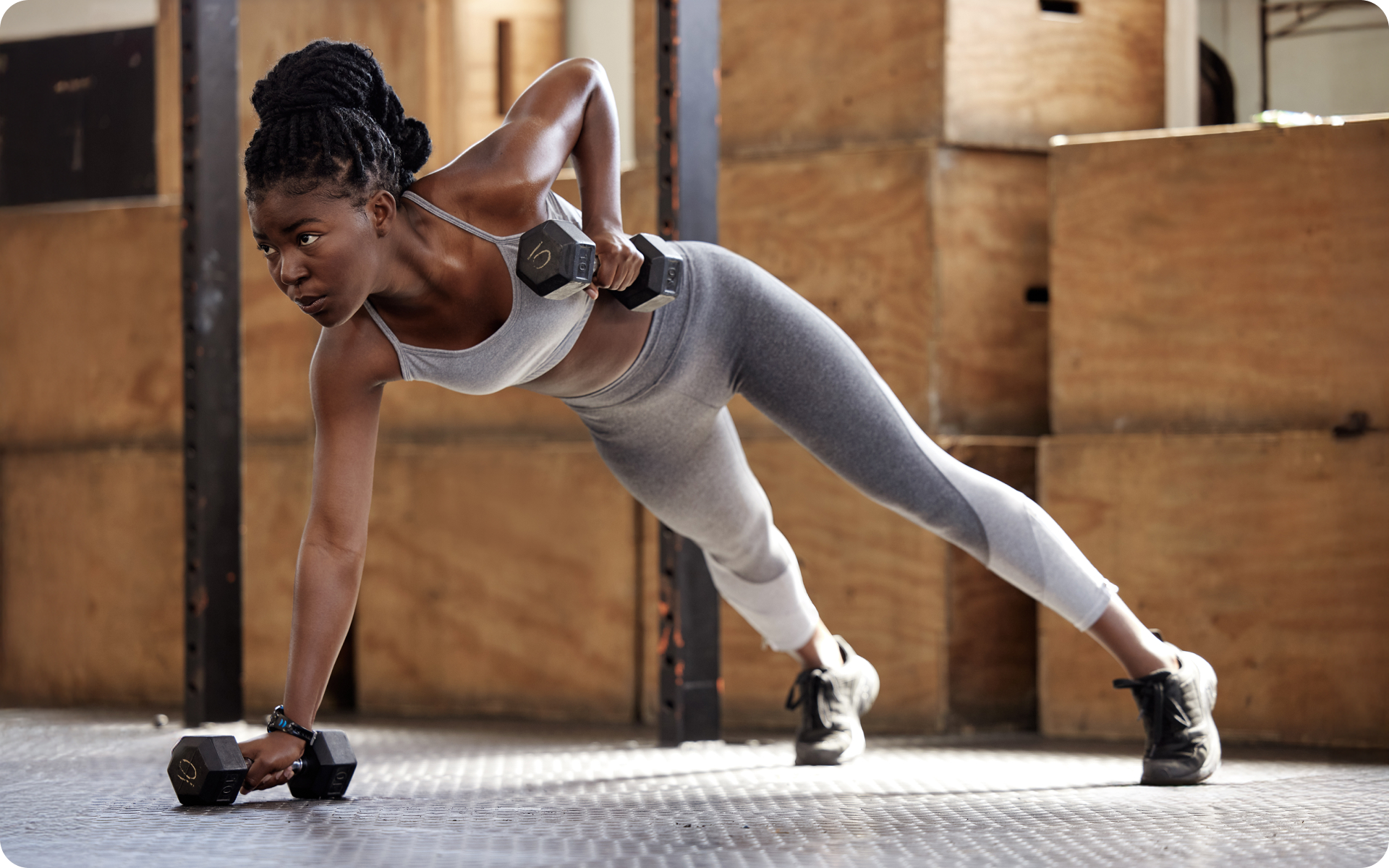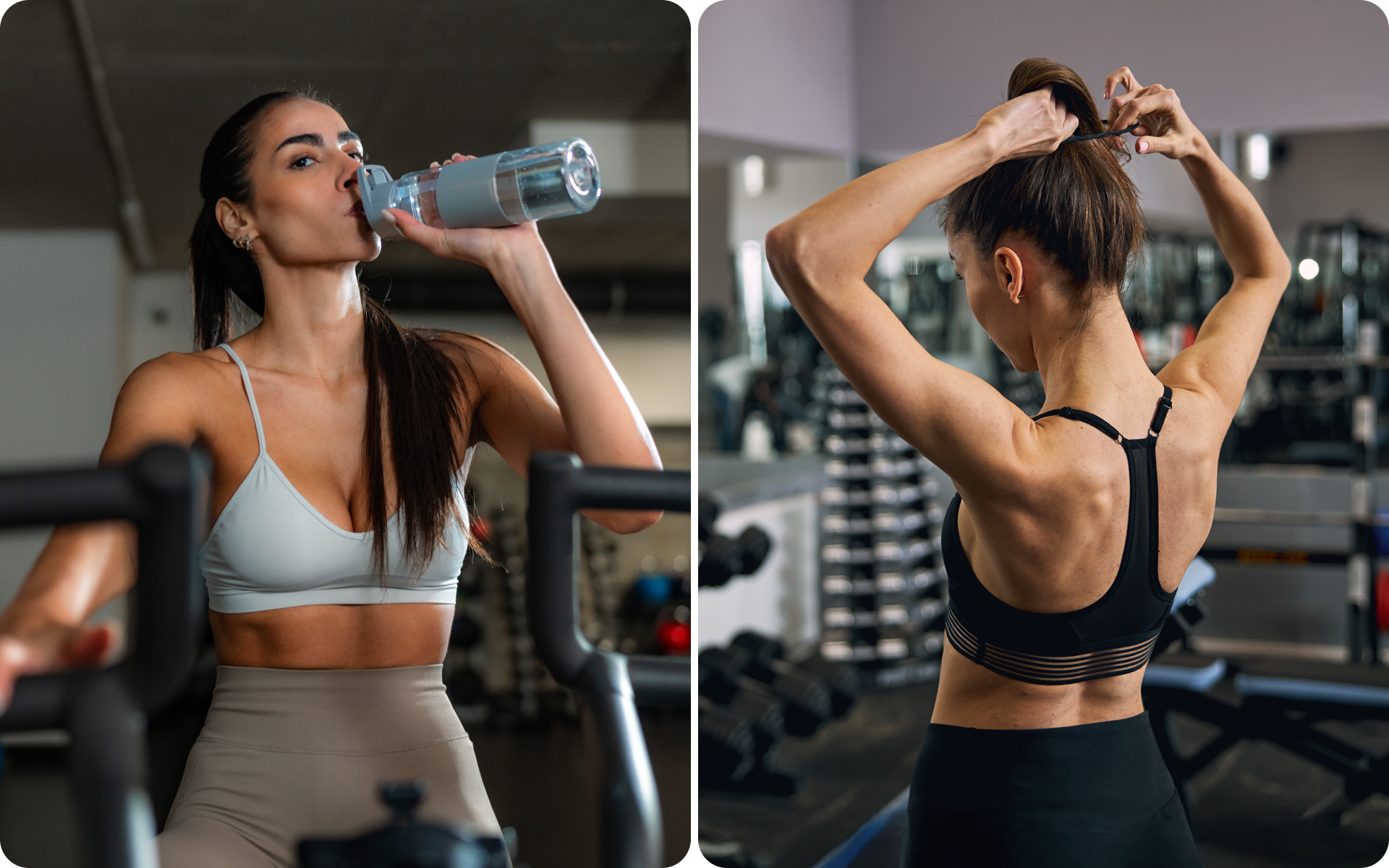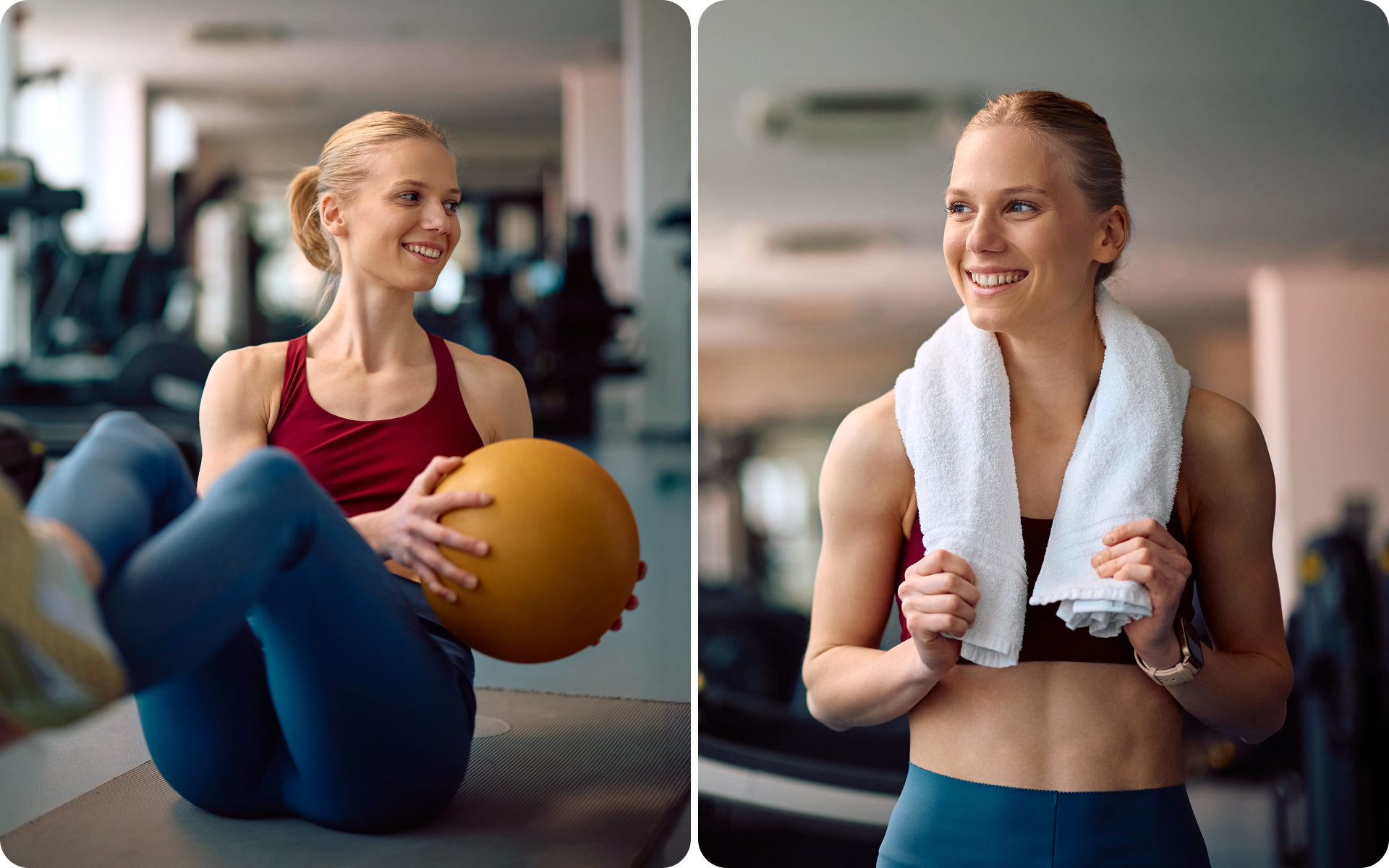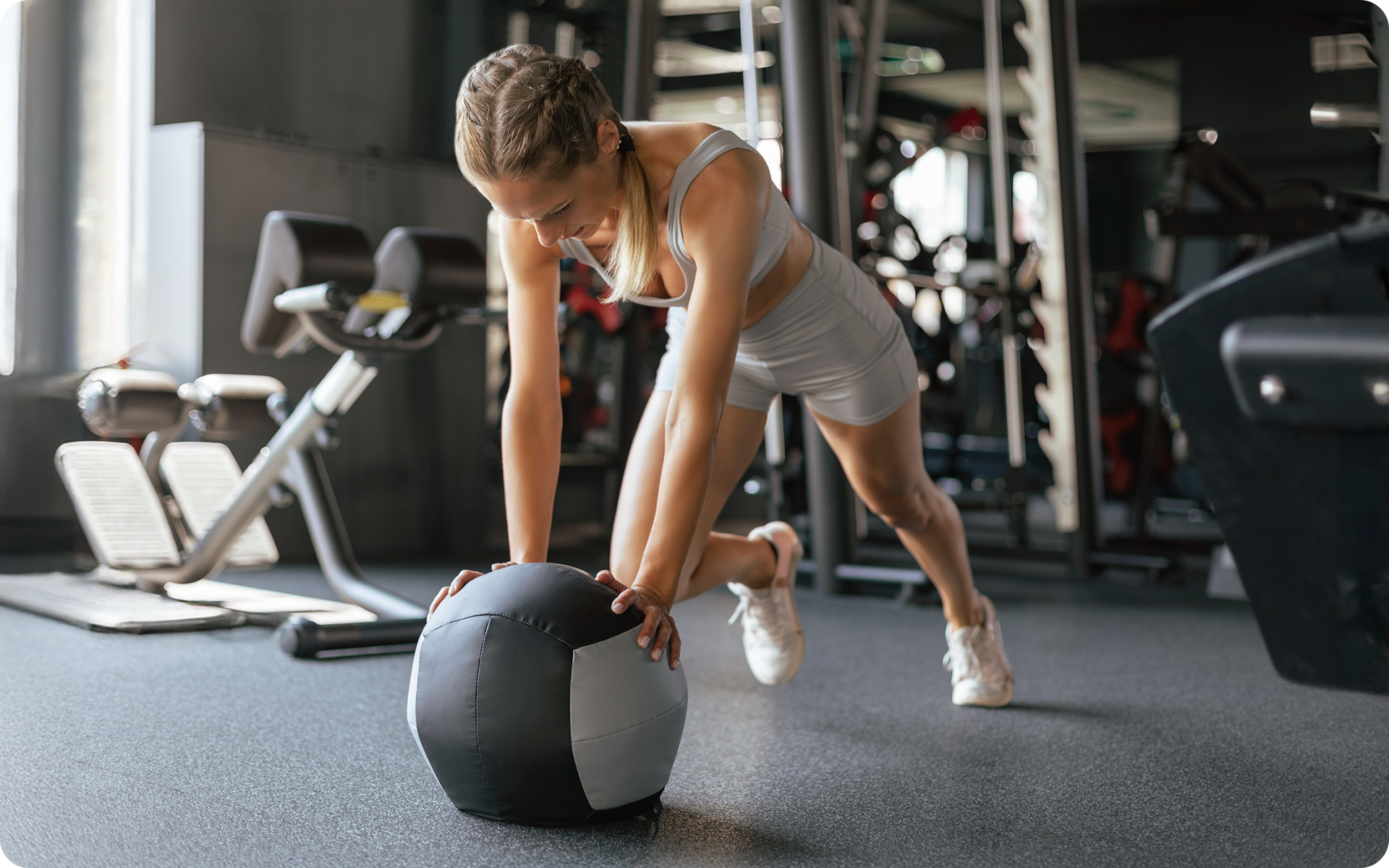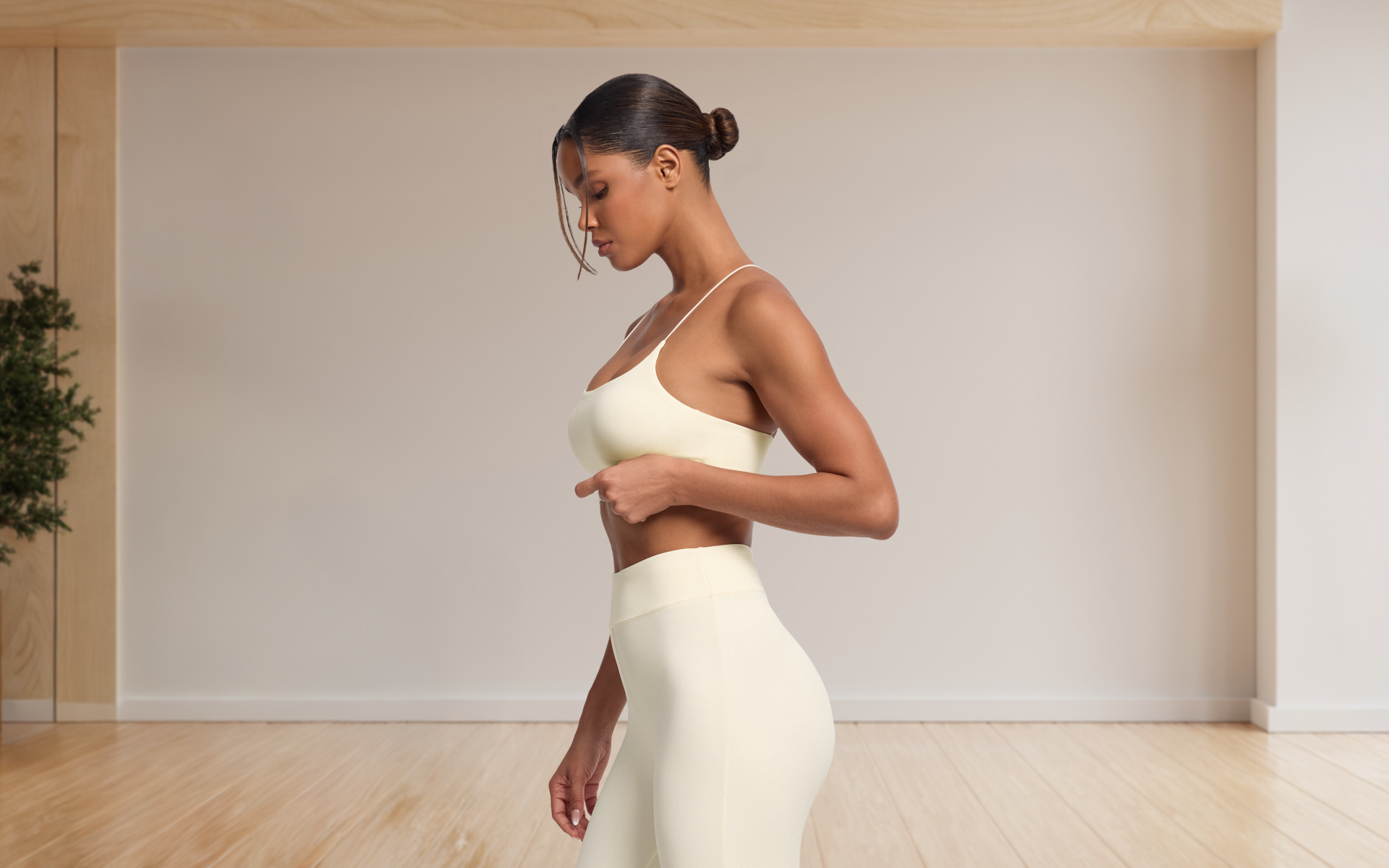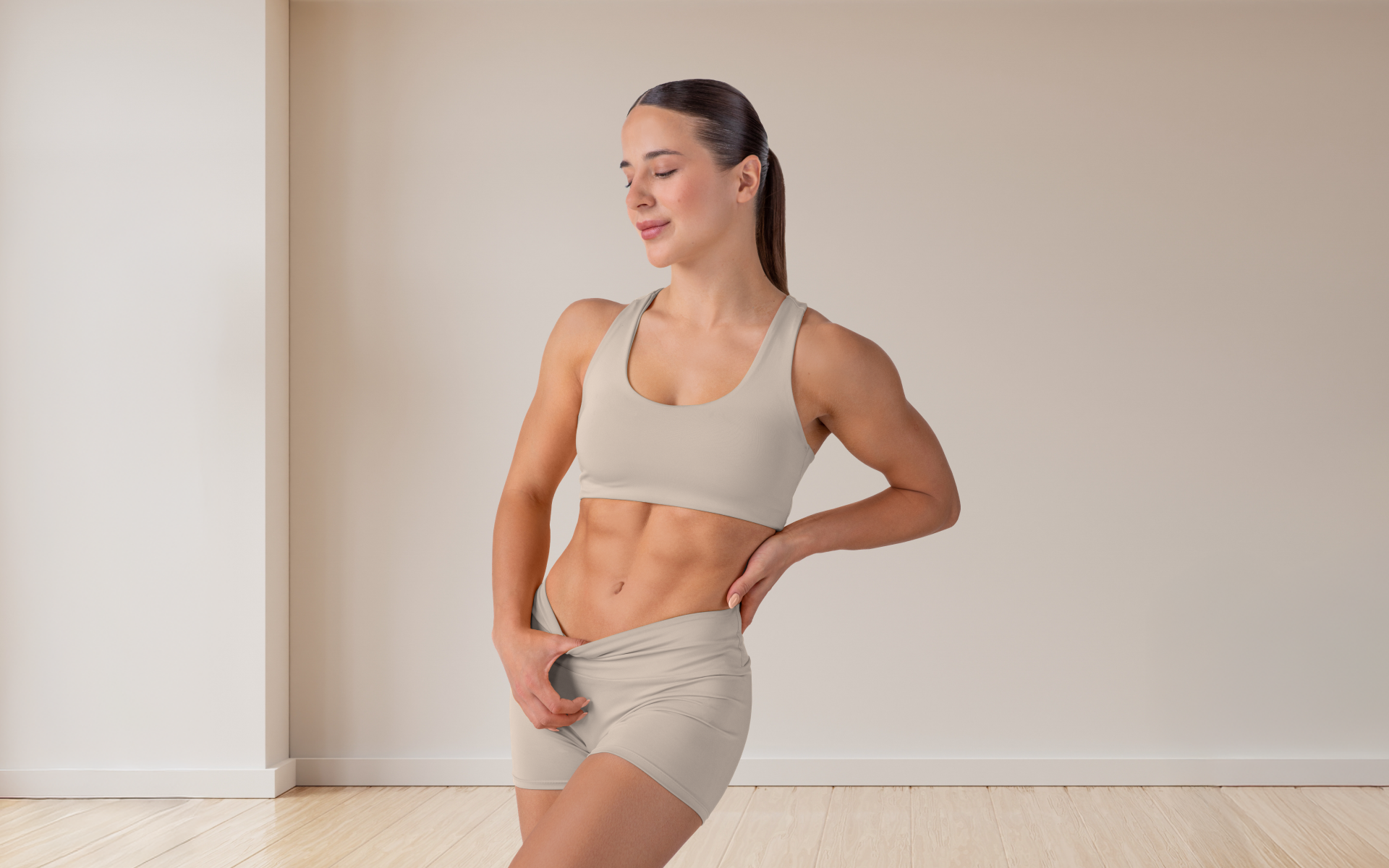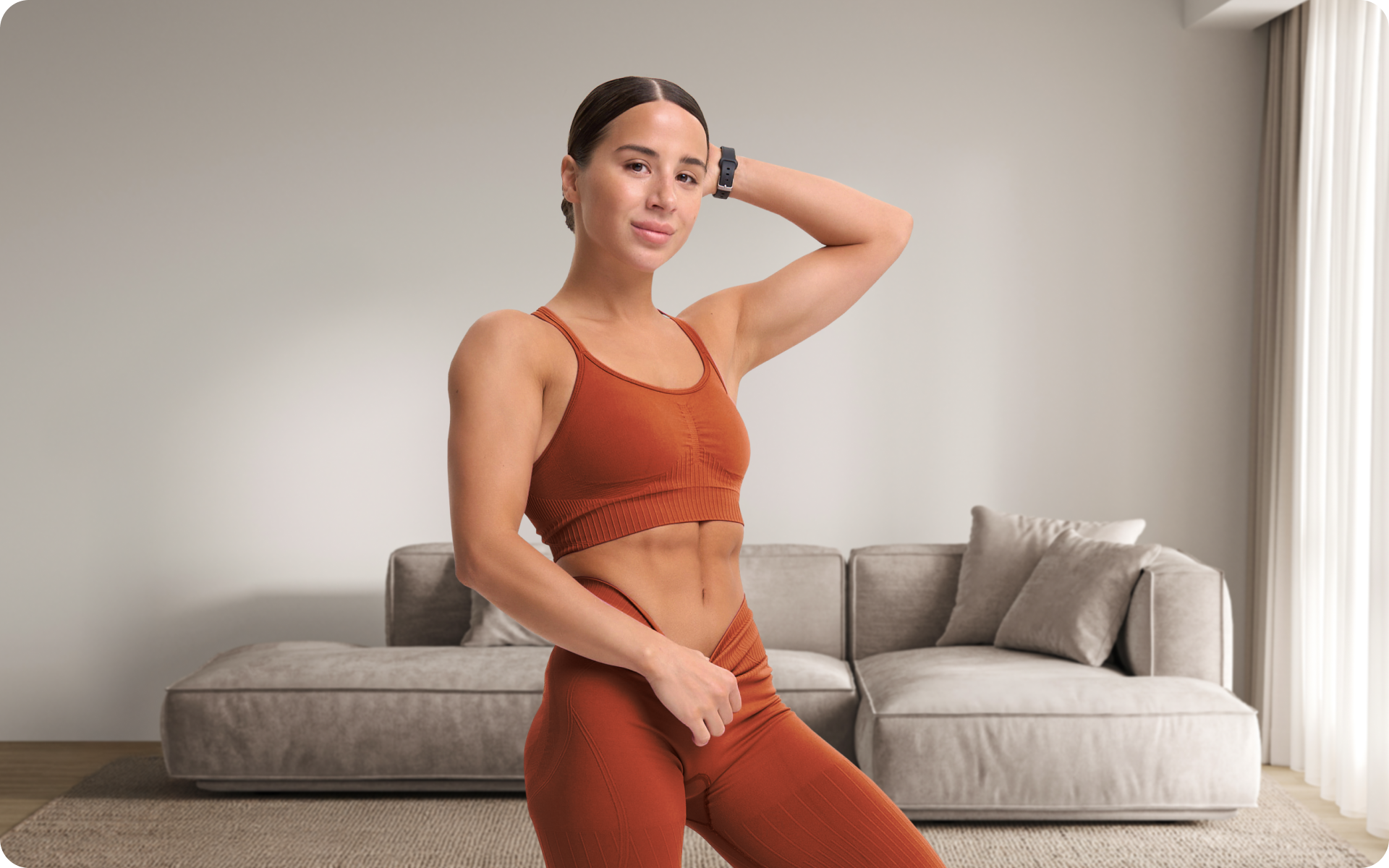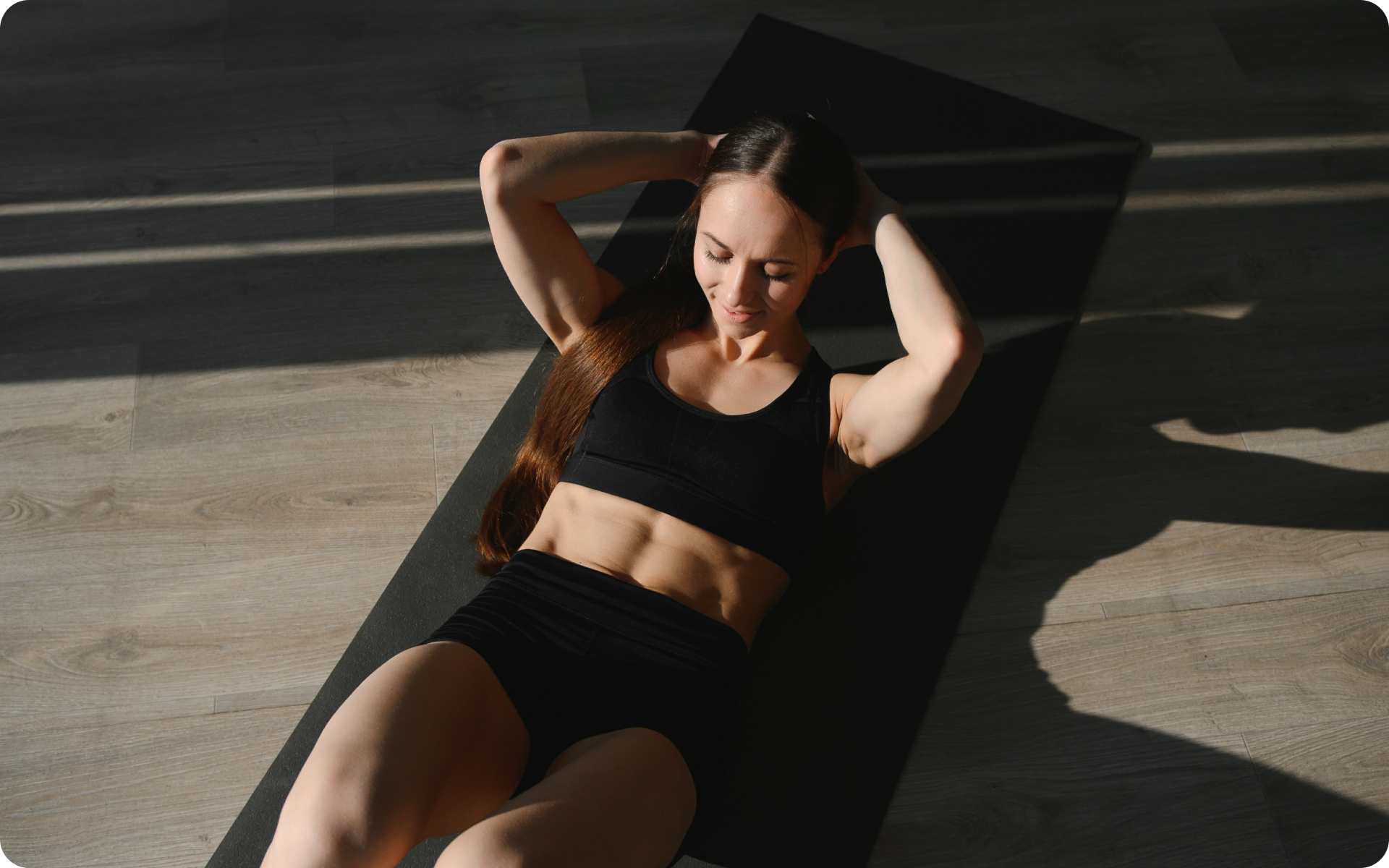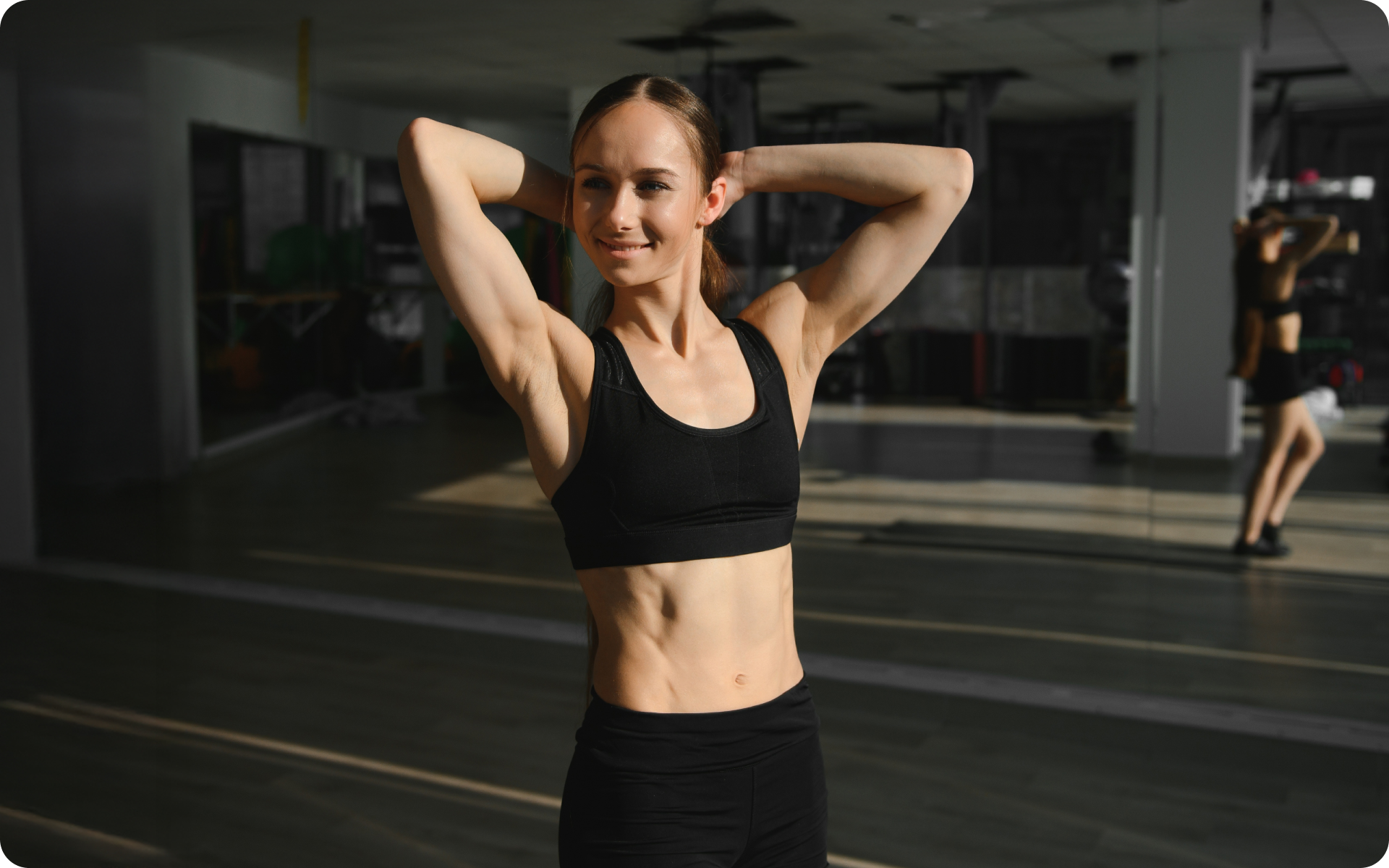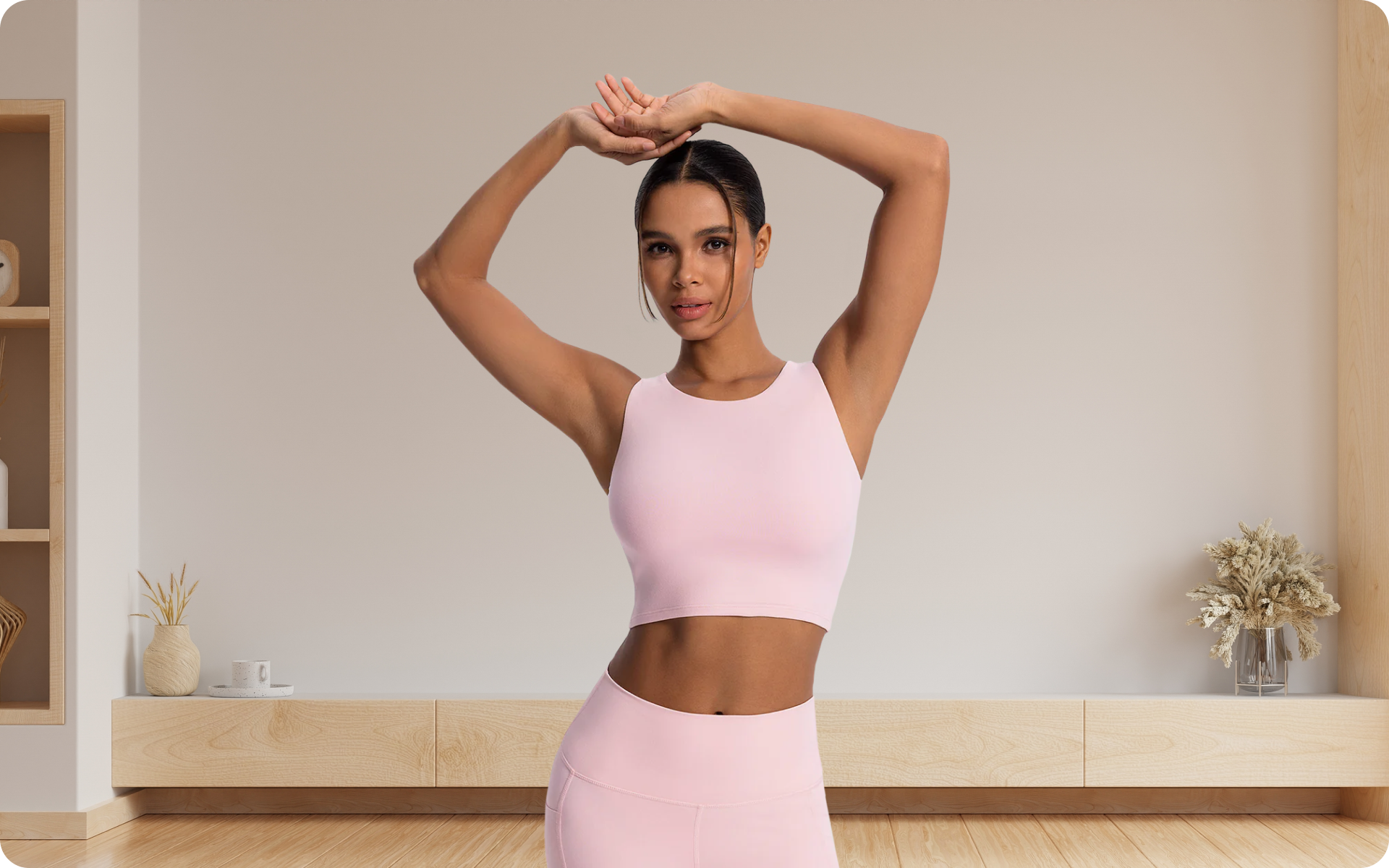Do you find yourself tirelessly crunching, planking, and twisting, but still feel that your “lower abs” are playing hard to get? You’re not alone. The journey to a truly strong and sculpted core is often elusive and has left many of us wondering if we’re even hitting the right muscles. A strong core goes beyond just aesthetics – a powerful lower core is fundamental to everyday functioning. It ranges from athletic performance to preventing back pain.
We’re here to help you with the most effective lower ab exercises. This isn’t just another list of exercises, it’s your comprehensive guide to understanding and engaging your lower abs, whether you workout at the gym or at home. We’ll dive deep into why these muscles can feel like your Achilles heel of fitness, and unveil the best exercises to integrate into your routine, whether you prefer a lower ab workout at the gym for men or a streamlined lower ab workout at the gym for ladies.
Get ready to put your head down, dispel common myths, and take your core training to the next level.
Are Lower Abs Hardest to Get?
If you’re reading this, you’re probably quite familiar with that frustrating feeling of working hard on your abs, but those lower core muscles just won’t pop.
You’re not alone. Even the most fit people, those you see crushing it at the gym, often feel like getting those lower abs to show up is the hardest part of their journey.
While your abs are actually one long muscle (called the rectus abdominis), it’s true that the lower part of it can feel uniquely tricky to target and make stand out (1).
The idea that achieving lower abs is difficult stems from several factors, including:
- Anatomical Reality: The rectus abdominis is one continuous muscle, but different parts of it can be isolated and trained. The “lower abs” refers to the inferior (lower) portion of this muscle (1). Incorrect form, particularly the inability to achieve proper posterior pelvic tilt, prevents proper lower ab engagement during workouts.
- Fat Distribution: For many people, the lower ab area is a common site for fat storage. Even with strong underlying muscles, a layer of subcutaneous fat can obscure definition, which makes it seem like the muscles are harder to get (2). For many people, the lower ab area is the last place to lose fat, in spite of muscle development.
- Movement Patterns: Everyday activities and many go-to ab exercises tend to focus on the upper abdominal region or general core stability, often neglecting specific lower ab engagement. While they’re essential for overall health, many lower ab workouts at the gym with weights focus on stabilizing the spine rather than specifically flexing the lower rectus abdominis(1).
- Neuromuscular Connection: Some individuals may have a weaker mind-muscle connection with their lower abdominal muscles, which makes it harder to knowingly activate them during exercises (2).
Read more: Ab Workouts With Weights: The Best Exercises To Try
Why Is It so Hard to Engage the Lower Abs?
Even the most effective lower ab exercises can sometimes miss the mark in getting those lower abs to work. It’s a tricky balance between how your body is built and how you usually move around.
Although your entire “six-pack” muscle (the rectus abdominis) tenses up all at once, certain moves can make you feel it more in the lower part.
The real challenge often comes down to getting your hips and pelvis to tilt just right, without letting those strong hip flexor muscles take over the show.
BetterMe: Health Coaching app helps you achieve your body goals with ease and efficiency by helping to choose proper meal plans and effective workouts. Start using our app and you will see good results in a short time.
The top reasons for difficulty in engaging the lower abs are:
- Over-reliance on Hip Flexors: Many lower abdominal exercises involve lifting the legs. In such movements, the strong hip flexor muscles (such as the iliopsoas) can easily take over, which reduces the workload on the lower abs. During leg raises and similar movements, the hip flexors often compensate for weak or disengaged lower abs (2).
- Inaccurate Posterior Pelvic Tilt: Proper engagement of the lower abs often requires a posterior pelvic tilt (tucking the tailbone under). Without this, the exercise may mainly target hip flexors or put strain on the lower back. The inability to effectively tilt the pelvis backward during exercises limits the engagement of the lower abs (2).
- Weak Mind-Muscle Connection: For many people, the connection between their brains and their lower abdominal muscles isn’t as strong as it is for other muscle groups. This makes it difficult to consciously contract and feel the lower abs working. Many people struggle to isolate and feel their lower abs contracting, which can leave something to be desired during exercises (2).
- Neglect of Specific Training: If you’ve typically focused on general core stability or upper ab exercises, your lower abs may be underdeveloped and less responsive to typical ab workouts. Not gradually increasing the challenge for lower abs can hinder their development and make it seem harder to engage (3).
- Improper Form: A major reason lower ab exercises fall short is poor execution. For example, during knee tucks, many people stop when their thighs are parallel to the floor. This mostly works the hip flexors. To fully engage the lower abs, the knees must be pulled higher, with a pelvic curl at the top. The movement should feel like you’re trying to roll your pelvis toward your ribcage, not just lift your legs.
If you’re curious about the best ab workouts for women, check out our earlier article.
How Do I Activate My Lower Abs?
Getting those lower abs to fire up takes a bit of dedication and some smart thinking during your workout. Do you want in on the big secret? It’s all about making sure your hip flexors (the muscles that help lift your legs) don’t take all the limelight (4). The best 6-pack ab workouts really zero in on making your lower ab muscles do the work.
To effectively activate your lower abs, focus on:
- Posterior Pelvic Tilt: This is by far the greatest priority. Lie on your back, flatten your lower back against the floor, and imagine tucking your tailbone slightly under (3). This alone initiates lower ab engagement – practice this in isolation before working it in your exercise routine.
It helps to understand why this works: the rectus abdominis (RA) is responsible for stabilizing and flexing the spine. When you’re activating the lower abs, you’re essentially flexing the lower part of the spine, which is what a proper posterior pelvic tilt allows. This is also why the upper and lower abs can feel like they’re performing slightly different tasks as they’re contributing to different segments of spinal flexion. Practice this movement in isolation first, so your body learns to activate the correct muscles before you add it to your workouts. - Exhalation with Contraction: Exhaling forcefully as you contract your abs can help deepen the contraction and better engage the lower abs (3).
- Slow and Controlled Movements: Instead of using momentum to get through your sets, try to consciously hold your position and slow down. Perform all repetitions slowly and with control, focusing on the muscle contraction rather than just completing the movement (3).
- Mind-Muscle Connection: Consciously think about drawing your belly button to your spine to feel your lower abs contracting. Place a hand on your lower belly to feel the muscles working. A tell-tale sign of non-engaged lower abs is if your back is arching, be mindful of your posture (4).
- Progressive Overload: Once you master the posture for lower ab engagement, gradually increase the difficulty level to continue building strength and definition (4).
What Exercise Is Best for the Lower Abs?
Are you wondering what’s the most perfect exercise for your lower abs? Honestly, it’s not a one-size-fits-all approach – it comes down to where you’re at with your fitness journey and what your fitness goals are. Generally, the exercises that really get those lower abs burning are ones that include the following:
- Flexing at the hips and bringing your legs up
- Focusing on tucking your tailbone under and curling your pelvis up
- Keeping your movements slow and controlled
Reasons why BetterMe is a safe bet: a wide range of calorie-blasting workouts, finger-licking recipes, 24/7 support, challenges that’ll keep you on your best game, and that just scratches the surface! Start using our app and watch the magic happen.
Keep reading to find out the best lower ab workouts for men and women of any fitness level:
- Hanging Leg Raises: If you go to the gym, you will have noticed this gold standard exercise for ab workouts. Ab exercises on pull-up bars are incredibly effective – all you need to do is lift your knees towards your chest, focusing on tilting your pelvis backward and crunching your lower abs (5). Make sure you bring your thighs up past parallel – not doing this is a common mistake made by many people. Your legs should come up by curling your hips. Instead of thinking about lifting your knees straight up, try to drive them into your stomach. Our previous post goes into great detail about the best 6 pack ab workout.
- Reverse Crunches: If you’re a beginner, this is the easiest exercise to get started with. Lie on your back and bring your knees toward your chest, lifting your hips slightly off the floor and focusing on the pelvic tilt (5). It can be easy to use your upper abs to pull your torso up, so make sure you focus on using your lower abs to curl your pelvis up.
- Cable Reverse Crunches: If you want to try your hand at a lower ab workout at the gym with weights, try using a cable machine. Simply attach an ankle strap and perform reverse crunches with added resistance (5).
- Decline Bench Reverse Crunches: Another lower ab workout at the gym is reverse crunches on a decline bench. This increases the range of motion and intensity as you work against gravity (5).
- Stability Ball Pike: This can be done both at the gym or at home if you have a stability ball. With your feet on a stability ball in a plank position, pull your hips up toward the ceiling, keeping your legs straight, engaging your lower abs to lift your hips (5). This may take some practice to perfect.
- Ab Rollout: These can be performed both kneeling and standing. They target the entire core – the ab rollout demands significant lower ab control to prevent the lower back from arching (5).
- Scissor Kicks: As the name suggests, this exercise involves you lying on your back, extending your legs, and keeping your lower back pressed to the floor. With small, controlled movements, criss-cross your legs like scissors (5). Make sure you don’t raise your legs up very high and keep them as close to the floor as possible without actually touching the floor – it’s an excellent workout for endurance. This is a great lower ab exercise for beginners.
- Dragon Flags: This is an advanced exercise that deeply engages the entire rectus abdominis, particularly the lower ab portion. This is one of the best 6-pack ab workout exercises and is perfect for progressive growth (5).
What Is an Isolative Lower Ab Workout at the Gym?
If you want to really blast your lower abs, read on. An isolative lower ab workout at the gym is all about cutting out the help from other muscles, particularly those strong hip flexors that give you a helping hand with your core workouts.
As the name suggests, these exercises are focused on isolating your lower ab muscles. The goal here is to make sure you’re feeling that burn directly in your lower stomach area.
- Controlled, Deliberate Movements: We often end up using momentum to get through core workouts, but in this case, every single rep should be slow and intentional. You’re aiming for a full range of motion while feeling your lower abs stretch and squeeze hard (5).
- Varying Angles and Resistance: Don’t be afraid to shake things up. Try challenging yourself by experimenting with different angles and varying weights – this progressive load will help make your lower abs stronger (5).
- Focus on Pelvic Tilts: Incorporate exercises in your routine that are all about rotating your pelvis backward, rather than just swinging your legs around. If you master this move, it’s incredibly effective for your posture and for relieving back pain from ab workouts (6).
- Minimize Hip Flexor Activation: Be very aware of your hip flexors trying to take over. If you feel it more in your hips than your lower abs, this is a reminder to tweak your form or switch to a different exercise (3). If an exercise is too challenging, it will force you to use your flexors, so start with an appropriate intensity level.
- Utilize Equipment for Support: Whether you’re working out at the gym or at home, don’t be afraid to use equipment to ramp up your lower ab workouts. Tools such as benches, chairs, and stability balls help stabilize your body so you can truly isolate those lower abs (5).
- High Repetition and Time Under Tension: For some exercises, such as flutter kicks or v-holds, doing more reps can be beneficial. It will keep those muscles under tension for longer and can really intensify the burn and help isolate the targeted muscle groups (5).
- Specific Exercises: Allocate a day in your workout schedule for core exercises. Use this time to experiment with different moves such as hanging knee raises with a pelvic tuck and reverse crunches (especially on a decline bench) or try specialized gym machines that target the lower ab area (5).
Read more: Killer 30-Minute Ab Workout for Busy People
Can I Do a Lower Ab Workout at the Gym Every Day?
While we all want to see rapid results, working your lower abs or any other muscle group every day is generally not advisable. Rest and recovery are an important part of muscle development, so give yourself the time to recover and rebuild after a workout.
A general rule of thumb when it comes to lower ab training frequency is to avoid overtraining, which can lead to fatigue, loss of motivation, or injury (6).
Everybody is different, so find the balance that works for you – ideally, at least a day or two between muscle groups is recommended. Take a look at some considerations to figure out what works best for you:
- Allow for 24-48 Hours of Recovery: For most individuals, working the lower abs 2-3 times per week with a day of rest in between is optimal. This may vary from person to person, so do what works best for you (6).
- Listen to Your Body: If you feel consistent soreness, fatigue, or decreased performance, this is a sign that you need more rest (6).
- Vary Intensity and Volume: Don’t do the same high-intensity workout every time. Alternate between heavier and lighter sessions to give yourself enough recovery time and to keep your muscles on their toes (6).
- Focus on Diet and Sleep: We cannot emphasize the importance of REM sleep enough. A good diet and restful night’s sleep of 7-8 hours is absolutely essential for muscle recovery and general well-being (6).
- Incorporate Active Recovery: Light cardio, yoga, or stretching on rest days can help recovery without overstressing the muscles (6).
Planks are meant to engage the entire core, which includes the rectus abdominis, obliques, and transverse abdominis, for isometric stability (1). While they do contribute to overall core strength, they don’t specifically isolate the lower abs in the same way reverse crunches or leg raises do. Typically, crunches target the upper rectus abdominal area by bringing the rib cage toward the pelvis (6). While there is some general activation of the entire core, crunches aren’t ideal if you’re looking to specifically target the lower abs. Reverse crunches, where the pelvis moves toward the rib cage, are far more effective for lower ab engagement (5). Generally, the upper abdominal muscles (the top “two-pack” or “four-pack”) tend to become visible first as body fat percentage goes down. However, this is dependent on genetic fat distribution and the fact that many common ab exercises tend to emphasize the upper portion of the rectus abdominis (6). The lower abs are commonly the last to show due to continuous fat deposits in that area for many people. For more details about ab exercises on pull up bar, take a look at our prior publication. The ideal plank duration depends on your current fitness level. Your focus should be on form rather than duration. For beginners, holding a plank for 20-30 seconds with proper form is a good starting point. As your muscles become stronger, you can aim for 60 seconds. Beyond 60-90 seconds, it’s more beneficial to progress to more challenging plank variations (e.g. weighted planks, plank jacks, long-lever planks) or dynamic core exercises rather than simply extending the hold time indefinitely (6). Frequently Asked Questions
Do planks work the lower abs?
Do crunches hit the lower abs?
Which abs show first?
How long should I plank for?
The Bottom Line
Building strong, visible lower abs is about more than just aesthetics, it’s also about functional strength, proper posture, and injury prevention. While the rectus abdominis is one continuous muscle, targeting its lower portion requires focused technique. Factors such as fat distribution, hip flexor dominance, and weak mind-muscle connection often make the lower abs feel elusive. To succeed, you should prioritize posterior pelvic tilt, controlled movement, and consistent practice of exercises such as reverse crunches, hanging leg raises, and stability ball pikes.
Allowing time for recovery is equally important – training the lower abs every day can hinder progress and increase the risk of injury. Incorporate rest days, vary the intensity, and support your workouts with balanced nutrition and quality sleep. Whether you’re a beginner or an advanced athlete, understanding your body and refining your form are the keys to progress. Remain patient, track your improvements, and celebrate each milestone as you build a truly strong and defined core.
DISCLAIMER:
This article is intended for general informational purposes only and does not serve to address individual circumstances. It is not a substitute for professional advice or help and should not be relied on for making any kind of decision-making. Any action taken as a direct or indirect result of the information in this article is entirely at your own risk and is your sole responsibility.
BetterMe, its content staff, and its medical advisors accept no responsibility for inaccuracies, errors, misstatements, inconsistencies, or omissions and specifically disclaim any liability, loss or risk, personal, professional or otherwise, which may be incurred as a consequence, directly or indirectly, of the use and/or application of any content.
You should always seek the advice of your physician or other qualified health provider with any questions you may have regarding a medical condition or your specific situation. Never disregard professional medical advice or delay seeking it because of BetterMe content. If you suspect or think you may have a medical emergency, call your doctor.
SOURCES:
- Abdominal Exercises: A Review Study For Training Prescription (2017, researchgate.net)
- The mechanisms of muscle hypertrophy and their application to resistance training (2010, pubmed.ncbi.nlm.nih.gov)
- Muscles: testing and function with posture and pain (2005, pmc.ncbi.nlm.nih.gov)
- Muscle activities of the rectus abdominis and rectus femoris and their ratio during leg raises performed by healthy adults (2015, pmc.ncbi.nlm.nih.gov)
- Core stability exercise principles (2008, pubmed.ncbi.nlm.nih.gov)
- Low Back Disorders. Evidence-Based Prevention and Rehabilitation (2012, pmc.ncbi.nlm.nih.gov)
